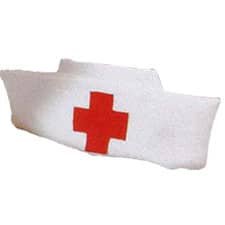 VA Posts Annual Medical Quality Report
VA Posts Annual Medical Quality Report
January 6, 2011
WASHINGTON – The Department of Veterans Affairs (VA) issued the 2010 annual VA Facility Quality and Safety Report on Jan. 5 that reports on VA health care for Congressional review and offers Veterans the opportunity to see the quality and safety findings specific to their VA medical center.
“We believe in our mission to provide the best care anywhere for Veterans,” said VA Under Secretary for Health Dr. Robert Petzel. “This posted report shows we are providing high quality overall and identifies the areas where we have opportunities to improve.”
This is the third year VA is posting the annual report and the second year to do so voluntarily.
The Quality and Safety Report, at http://www1.va.gov/health/HospitalReportCard.asp, provides a comprehensive snapshot of the quality of care VA provides at each of 153 medical facilities across the nation. When compared to private sector plans, VA’s findings showed higher quality marks for VA health care. VA used industry-standard measures to score the quality of the care it delivers, and the report shows that, overall, VA’s scores are better than private sector health plans. In addition to allowing VA to provide the public with an accounting of the quality and safety of its care, the report cards provide an opportunity for VA to make improvements where clinical indicators reflect cause for concern.
For instance, the findings related to quality of care for women and the perceptions of quality of care by ethnic minorities highlight that VA shares the same challenges as the private sector in providing equal care to all patients.
Committed to reversing these trends, VA has responded to these challenges in a variety of ways. For example, VA is evaluating emergency room (ER) care for women, rolling out an education plan for ER providers, implementing breast cancer registry to assist in follow-up of abnormal mammograms, and training 400 more
providers in basic and advanced “mini-residencies” in women’s health.
Also, VA medical centers and clinics each have a minority Veterans program coordinator to provide outreach to minority Veterans, as well as educate and sensitize VA staff to minority needs. The coordinators advocate for minority Veterans by identifying gaps in services and making recommendations to improve service delivery.
“I hope every Veteran across America reads the report and learns more about the quality health care they have earned from a grateful nation,” Petzel said. “VA will build from these results, addressing concerns where needed and building even stronger programs where there has been success. I am proud of the VA staff who serve Veterans every day.”
The annual Facility Quality and Safety Report is just one of several public postings of various health care quality metrics for VA’s medical facilities.
Hospital Report Card 2010
The Veterans Health Administration (VHA) is nationally and internationally known for its commitment to innovative quality and safety programs and for its transparency in being accountable for the results achieved by those programs.
VHA issued its first comprehensive facility-level report of quality and safety data, reporting on care provided in inpatient and outpatient settings, quality of care within specific patient populations, and patient satisfaction and outcomes in 2008 and continues to do so annually.
Raw data from both reports are published on data.gov to allow Veterans and the public to track changes, improvements in care, and the results of initiatives to address issues noted in previous reports. Further information may be found at hospitalcompare.hhs.gov.
Links to 2010 Hospital Quality Report Card
- Report Card
- Data.gov links:
- Access to Care: http://www.data.gov/raw/4281
- Ambulatory Care Sensitive Conditions: http://www.data.gov/raw/4283
- Hospital Accreditation: http://www.data.gov/raw/4274
- Hospital and Facility Services: http://www.data.gov/raw/4273
- Infrastructure: http://www.data.gov/raw/4272
- Medical Center Staffing: http://www.data.gov/raw/4275
- Morbidity and Mortality: http://www.data.gov/raw/4277
- Nosocomial Infection: http://www.data.gov/raw/4278
- Observed minus Expected Length of Stay: http://www.data.gov/raw/4279
- Patient Satisfaction: http://www.data.gov/raw/4282
- Population Quality of Care: http://www.data.gov/raw/4276
- Root Cause Analysis: http://www.data.gov/raw/4280
- Rural vs Urban: http://www.data.gov/raw/4284
Links to 2009 Hospital Quality Report Card
- Press Release
- Report Card
- Data.gov links:
- Hospital Settings: http://www.data.gov/details/1289
- Infrastructure: http://www.data.gov/details/1287
- Patient Satisfaction: http://www.data.gov/details/1290
- Population Quality of Care: http://www.data.gov/details/1288
Links to 2008 Hospital Quality Report Card
- Press Release
- Report Card
- Data.gov link: http://www.data.gov/details/1208
Note: Some links will take you outside of the Department of Veterans Affairs Website.

Carol graduated from Riverside White Cross School of Nursing in Columbus, Ohio and received her diploma as a registered nurse. She attended Bowling Green State University where she received a Bachelor of Arts Degree in History and Literature. She attended the University of Toledo, College of Nursing, and received a Master’s of Nursing Science Degree as an Educator.
She has traveled extensively, is a photographer, and writes on medical issues. Carol has three children RJ, Katherine, and Stephen – one daughter-in-law; Katie – two granddaughters; Isabella Marianna and Zoe Olivia – and one grandson, Alexander Paul. She also shares her life with her husband Gordon Duff, many cats, and two rescues.
ATTENTION READERS
We See The World From All Sides and Want YOU To Be Fully InformedIn fact, intentional disinformation is a disgraceful scourge in media today. So to assuage any possible errant incorrect information posted herein, we strongly encourage you to seek corroboration from other non-VT sources before forming an educated opinion.
About VT - Policies & Disclosures - Comment Policy




